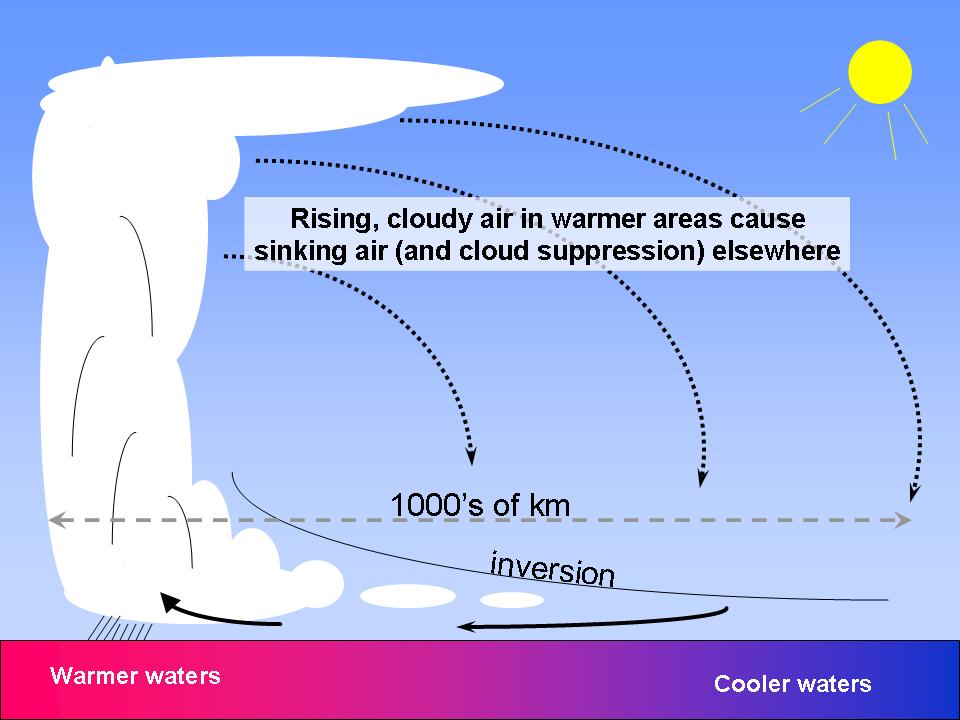Over 20 years ago, Ramanathan and Collins (1991 Nature, “RC91”) advanced what became known as the “Thermostat Hypothesis”, relating to how cloud formation over the tropical Pacific warm pool limits just how warm surface waters there can get. While this conceptual view was OK for the warm pool itself, they made some extrapolations which weren’t really warranted about what this meant for the larger-scale climate system, and ultimately whether “global warming” will be reduced by a resulting increase in cloud cover reflecting more sunlight back to space (negative cloud feedback).
Now, I will say that I believe that the climate system is stabilized by negative cloud feedback, even though most if not all climate models exhibit positive cloud feedback. But you have to be careful about what you use as evidence, and cloud formation over warm areas (e.g. at the end of this post at WUWT) is simply not evidence. Even climate models with strong positive cloud feedback (decreasing clouds with warming) are going to form clouds over warm areas of the oceans. That’s the way atmospheric circulation systems work.
The RC91 Thermostat Hypothesis paper, written by experts in radiation but not so much in atmospheric dynamics, was quickly attacked for neglecting the fact that, for all of that rising cloudy air over the warm pool, there has to be sinking air elsewhere which suppresses cloud formation.
In other words, just because clouds preferentially form over locations with warmer ocean waters doesn’t mean it’s evidence for negative cloud feedback (clouds increasing with global warming). Here’s a cartoon showing the basic idea:

Hartmann and Michelsen (1993 J. of Climate) and Lau et al. (1994 Geophys Res. Lett., 21, 1157-1160) were among the first papers to point this out. Much work has been done on the issue in the last 22 years with the general conclusion that, for the tropical oceans at least, warming leads to virtually no net cloud feedback, either positive or negative. The problem gets even more complicated because the temperature inversion in the above cartoon — the result of subsidence-warmed air overlying cooler ocean waters — also causes marine stratus clouds to form, which have a strong cooling effect on the climate system as a whole.
If the cloud feedback problem was that simple, it would have been solved long ago. But it ain’t that simple.

 Home/Blog
Home/Blog



